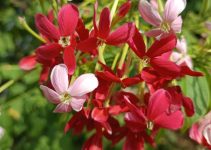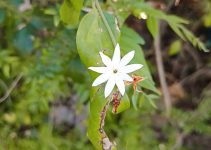Tecoma capensis: Cape honeysuckle
Cape honeysuckle
Cape honeysuckle (Tecoma capensis) is a hardy, fast-growing evergreen shrub or climber native to southern Africa. It’s popular for its vibrant orange to red tubular flowers and its ability to attract hummingbirds and pollinators.
Basic Growing Conditions
Sunlight
- Full sun is best for abundant flowering (6–8 hours per day).
- It can tolerate partial shade but expect fewer blooms.
Soil
- Prefers well-draining soil; loamy or sandy soil is ideal.
- Tolerates poor soil but thrives with some organic matter mixed in.
Watering
- Drought-tolerant once established.
- Water regularly during the first growing season to help roots establish.
- In dry regions, deep watering once a week is usually enough.
Flowering & Growth Tips:
Pruning:
- Responds very well to hard pruning—this encourages bushy growth and more blooms.
- Prune in late winter or early spring before new growth starts.
- Can be shaped as a hedge, shrub, or trained on a trellis as a climber.
Fertilizing:
- Use a balanced fertilizer in spring to boost growth.
- Compost or slow-release organic fertilizer can also be beneficial.
- Too much nitrogen can encourage leafy growth at the expense of flowers.
Pests & Problems:
Generally, pest-resistant, but watch for:
- Aphids or whiteflies (treat with insecticidal soap or neem oil).
- Powdery mildew in humid areas—ensure good air circulation.
- Can spread aggressively in some climates; trim regularly to control size.
Propagation:
Propagate via:
- Semi-hardwood cuttings (most reliable)
- Seeds (less common, slower)
- Layering (natural method in the garden)
Climate Suitability:
- Can survive light frosts but will die back in hard freezes.
- In colder climates, grow in containers and bring indoors during winter.
Tips:
- Attracts hummingbirds, butterflies, and bees—great for pollinator gardens.
- Can be used as a privacy screen, flowering hedge, or trellis vine.
- Minimal maintenance once established.


